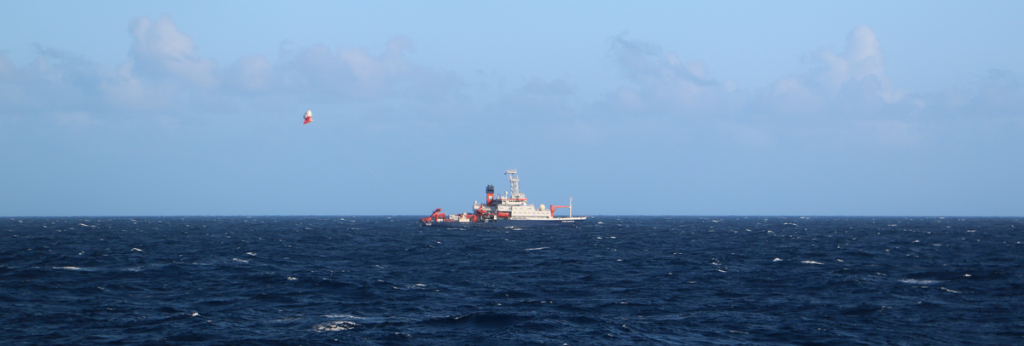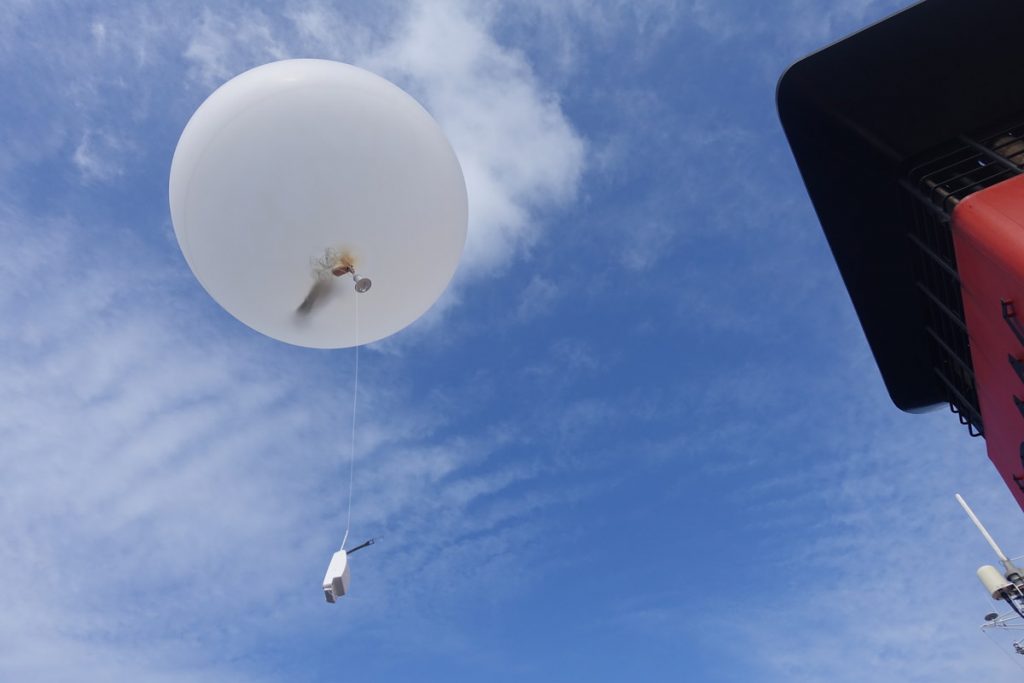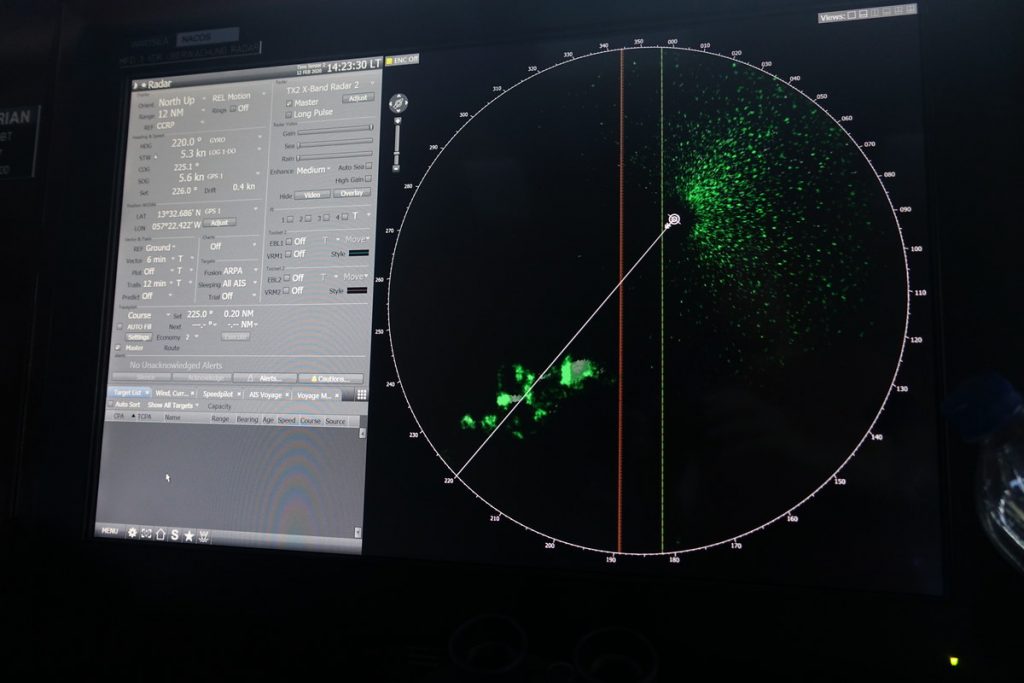
A couple of days ago we started heading north again. We are now in an area where also the research vessel Meteor and the research plane HALO are operating. HALO circles every second day above our heads measuring both with its instruments on board as well as by releasing dropsondes. Those small meteorological devices descend down on a parachute while recording a vertical profile of the atmosphere, sending the data via a small radio transmitter to the receiver. This way they give us important information about pressure, humidity, and temperature for the whole air column. The same principle is used by our radiosondes which we regularly launch from the ship. They work basically the same way but get sent up with an extremely elastic, helium-filled balloon instead. While ascending, the balloon expands slowly as the surrounding air gets thinner and thinner. At a height of about 20-30 km the balloon eventually bursts, and the radiosonde descends back to Earth on a parachute. Working in day-and-night shifts we launch these devices several times a day, which gives us a fairly continuous observation of the state of the atmosphere.

Together with the data we obtain from the measurements of various other devices on the ship we gain better insights in the evolution of clouds, the precipitation carried by and falling out of them, and their interaction with the surrounding. In the area where we are right now, the trade winds bring a lot of clouds along. So we look out for the fattest clouds with the highest precipitation potential and chase them. Unfortunately, the best time seems to be the early morning hours, which means, some “lucky” guys need to wake up very early to observe the sky and the radar. Once we found a suitable prey we follow them and try to gather as many data as possible, i.e. we place our kite inside the cloud and manoeuvre our ship underneath the cloud to observe it with our radars and laser devices. And if we are lucky, it might even rain and we can collect some rain samples.

Markus Ritschel